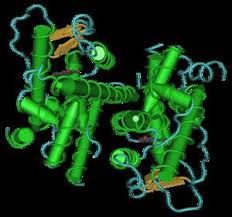
If there is a single refrain in the science of cancer that I found most resonant, it is probably this:
Anything that causes cells to divide more quickly increases the
chance of mutations — random copying errors that arise when the mother
cell’s library of genomic information is duplicated, letter by letter,
and passed on to its progeny. The right combination of these genetic
misspellings can give a cell the power to pursue a life of its own and
become the seed of a cancer.
Sometimes the effect is straight forward. Every gulp of alcohol kills
cells that line the alimentary tract. That stimulates the growth of new
tissue, increasing the rate of cellular division, and raising the risk
of esophageal cancer.
A carcinogen, in other words, does not have to be a mutagen —
something that alters DNA. Nor does it have to be a foreign substance. One
of the functions of estrogen in the female body is to drive the rapid
production of new cells in the breasts and uterus. That happens with
each turn of the menstrual cycle, these blind preparations for
motherhood, leading each month to new mutations and incrementally
raising the risk of cancer. Estrogen is on the National Toxicology
Program’s list of 240 human carcinogens, along
with ionizing radiation, arsenic, and benzene. (Researchers are
investigating whether the hormone also has direct mutagenic effects.)
As I mentioned in my previous dispatch,
the indiscriminate use of estrogen supplements to relieve some symptoms
of menopause probably created the spike in breast cancer that was
recorded in the 1990s. (The effect of estrogen-based contraceptives is
far less certain.) But the body’s own natural estrogen can have the same
effects. Any list of the risk factors for breast cancer includes
delaying or forgoing the bearing of children — for that leads to more
lifetime menstrual cycles, each accompanied by a blast of estrogen. The
Italian physician Bernardino Ramazzini was first to notice the results.
In 1700 he famously reported that nuns seemed to get more breast cancer
than other women. (About 150 years later, Domenico Rigoni-Stern
discovered another effect of cloistered life: nuns got less cervical
cancer, which now is known to be caused primarily by sexually
transmitted human papilloma virus.)
Elio Riboli, a cancer epidemiologist I met at Imperial College in
London, referred to the phenomenon I’m describing as “metabolic
carcinogenesis” — the body’s ability to give itself cancer. It includes
other factors like obesity — fat cells copiously secrete estrogen — and
diabetes. All three conditions feed on each other and all three are tied
in with insulin regulation.
There are loops within loops, with some surprising variations. Being
tall and thin doesn’t necessarily eliminate cancer risks. The
stimulating effects of natural growth hormones may be the reason why the
Million Women Study found that for every four inches over five feet in
height, cancer risk increased by 16 percent.
And here is a mysterious twist that I wrote about in The Cancer Chronicles, involving Ecuadoran villagers with a kind of dwarfism called Laron syndrome:
Because of a mutation involving their growth hormone
receptors, the tallest men are four and a half feet and the women are
six inches shorter. Life is not easy for them. The children are prone to
infections and adults frequently die from alcoholism and fatal
accidents. But they hardly ever get cancer or diabetes, even though they
are often obese.
I try to untangle the complex hormonal knots in a chapter of the book
I called “The Metabolic Mess.” Included is the fascinatingly intricate
process of inflammation, which has become recognized as a powerful
trigger of cancer. Inflammation is, after all, a healing mechanism that
involves the rapid creation of new tissues — more cellular divisions,
more DNA duplication, and more genetic mutations.
A chronic infection of h. pylori bacteria may be a cause of
stomach cancer. And inflammation is another means through which alcohol
wields its carcinogenic effects: it can lead to the inflammatory state
called cirrhosis of the liver. And that can be a precursor for cancer.